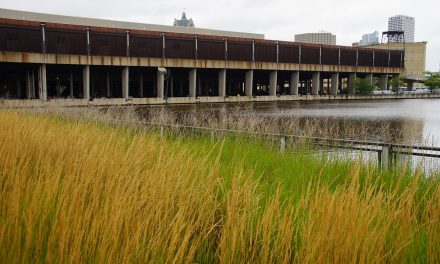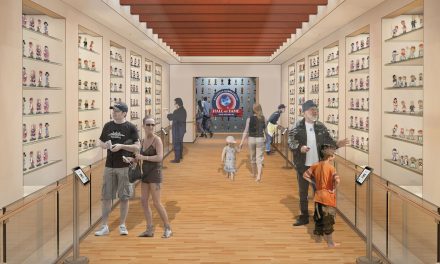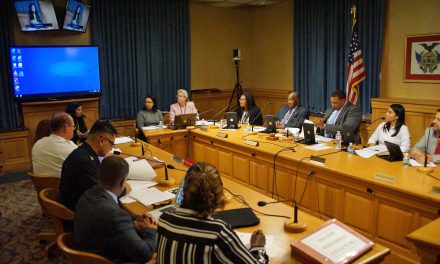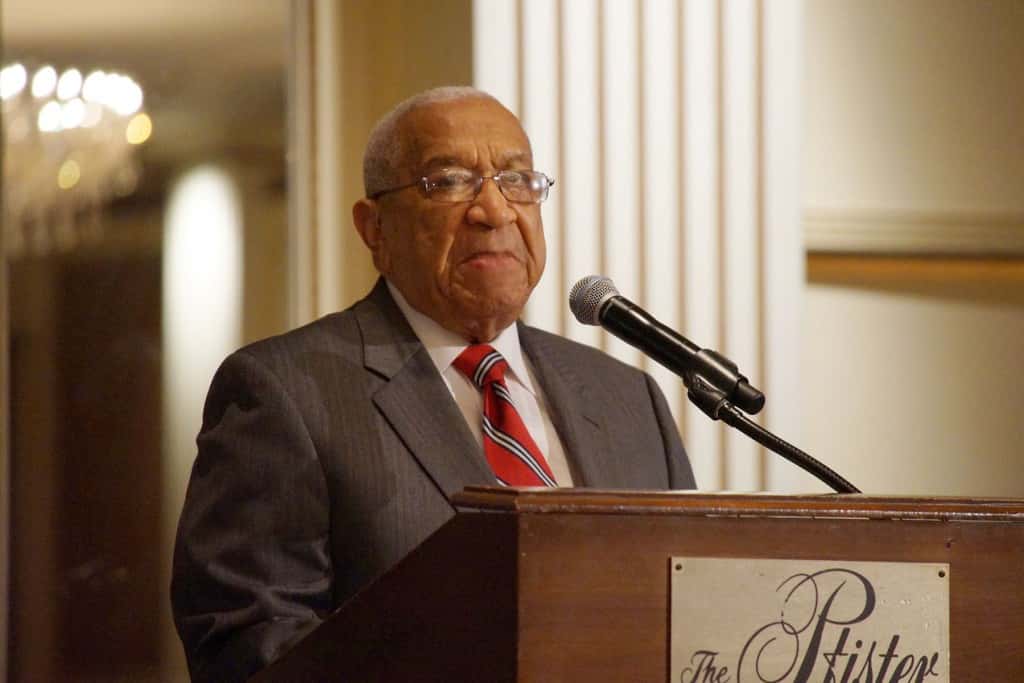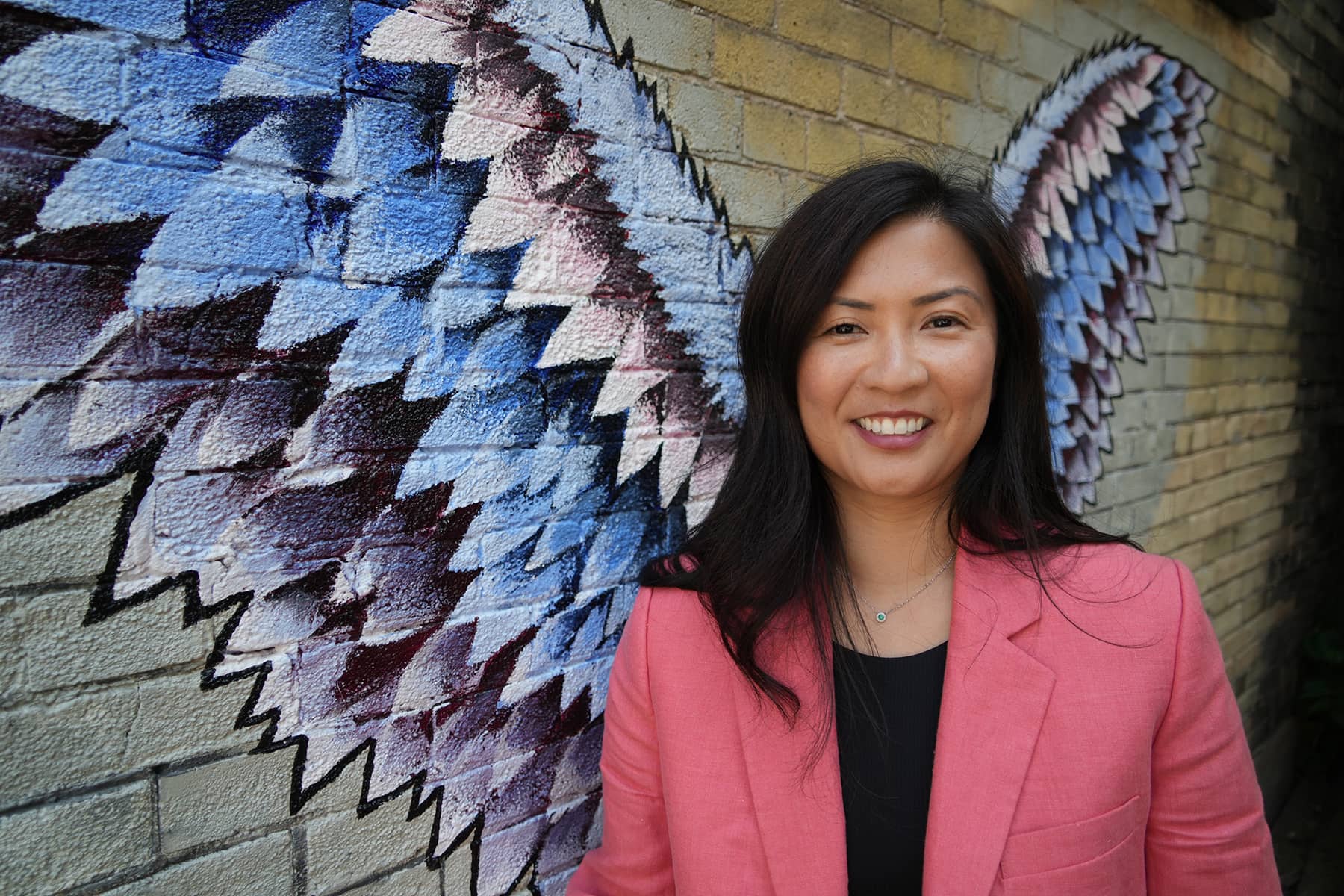
Jessica Boling was born in Seoul, South Korea, and adopted at four months old by an American family. While she had no memories of her home country, her earliest recollections of feeling different in the United States began in kindergarten.
That came with an exercise designed to dismiss students for lunch based on their hair and eye color, traits that matched their parents. If students had the same hair color as their father, they could leave. Then, if they had the same eye color as their mother, they could leave. And on it went.
It was a classroom of all White children, doing what would seem like a normal lesson for kids at school. Except for one young student.
“I did not look anything like my adopted parents. So I just sat there,” said Boling. “Then I realized there was no way I was going to get dismissed. I think I just lied so I could go to lunch. I went up to the teacher and said something like my father’s hair was black.”
Another exercise that highlighted her difference was when students were dismissed by their middle names. While most had what would be considered traditional American names, Boling’s middle name was her Korean surname. It was another contrast that made her stand out.
“They had middle names like Anne or Marie, and I was Jeong,” said Boling. “My parents never hid that I was adopted. But that was when I realized I was not the same as everyone else.”
Boling grew up in a small rural farming town outside of Seattle. It was a predominantly White community on an island with a population of about 1,500 people. She and her adopted sister, not biologically related but also from South Korea, were among the few Asians in the area.
“For Heritage Day at school, we had to make a little cardboard display to show our culture, and maybe then share some food. I was so excited to bring kimchi, so we prepared it at my house,” said Boling. “But in my classroom, it was full of kids from European cultures. So I brought in kimchi, and it was really foreign to their experience. All they talked about was how much my food stinks, or how gross it was. They didn’t like kimchi, so I felt they didn’t like me.”
While she tried to fit in with other classmates throughout her school years, Boling could not escape feeling systematically excluded from opportunities given to her peers. The understanding of those situations only came years later, when she realized the impact of the subtle yet pervasive racism she had faced.
“Mom told me that in second grade, some parents did not want me in the same class as their kids because I was testing too high. So when I was placed in the third grade I was left out of classes for high achieving kids,” said Boling. “There were lots of experiences like that, where I always seemed to be held back so others could get ahead. So I had to take a different path. I had to advocate for myself to be placed in higher classes. I was never automatically assigned like other students.”
Despite the challenges, she continued to outperform her peers in school. Her independent spirit also meant that she had more unsupervised time than most kids her age, which allowed her to pursue other interests.
Unrelated to being Korean but connected to her situation of being adopted, Boling remembered a story from her babysitter. That woman had other children but decided she wanted another one, so she adopted an older boy.
“What happened was, one day my babysitter came home and told her son that she had enough of him. She was calling the adoption agency and sending him back to the orphanage. He was playing outside and then he was gone, just like that,” said Boling. “I was only 8 years old, and I didn’t really understand. It had something to do with him misbehaving or getting bad grades at school. So that really propelled me to get good grades. I feared maybe it could happen to me too.”
When considering that time in her life, with a mix of pride and sadness, Boling was not sure if she could attribute her achievements to being smarter. She was definitely more driven to find opportunities, but there was also a cost to her ambition.
“I can see now that it was really draining for me, and how it made me want to not try as hard either,” said Boling. “I guess I felt like what was the point to make an effort if I can only go so far. I am impressed about how I did so many things and learned so much, but I still wish I had known more.”
The realizations about that time in her youth brought Boling closure on some issues, but further complications. It left her feeling disappointed with the adults in her life, and also soured her outlook on her school experience.
Boling’s self-advocacy extended into her early teen years, where she continued to struggle with her identity and other barriers.
“I’m happy that I advocated for myself and kept going, but it is also really exhausting to think about being that young and having to go through so many struggles alone,” said Boling.
She grew up with working parents and older siblings who were not as present. However, Boling found inspiration in sports celebrities like figure skaters Kristi Yamaguchi and Michelle Kwan. Seeing Asian representation in popular culture provided her with a sense of belonging and pride.
“Those were some of the coolest moments for me growing up in the early 1990s,” said Boling.
When describing her youth, Boiling said it was shaped by the well-meaning yet often misguided intentions of her adoptive parents. They were not religious people who used the institutions of the church for guidance, but they followed the advice from adoption agencies of that era.
It was a generation when parents did not know how to apologize for what happened in the past, and the common excuse was that they did the best they could. It was easier than accepting where they had made mistakes, or admitting to themselves the truth about things that made them uncomfortable.
“It was the common belief at the time that assimilation was the best thing to do,” said Boling. “My parents were older when they adopted me, and they came from a very stoic background. So talking about emotions and things like that was not something they grew up with, but I cannot hold that totally against them.”
Their thinking represented the beliefs of that time, which did not consider diversity. When children from Korea were adopted, they were brought into a White family and taught to identify as American. It would only be in later generations for that view to change. Families could be American and Korean and still be American families. Instead of being a White family, it was a multicultural family.
Before she was a teenager, Boling’s parents would take her and her sister to a Korean Culture Camp. The camps were funded by the Korean government and held across the U.S. for diaspora kids to experience Korean culture during the summer. It was one of several efforts her parents tried to build Korean connections for her.
“We started going at a young age, and I loved it. I thought it was so cool to be around kids who looked like me and to engage in cultural activities,” said Boling. “But as I grew older and hit my teenage years, I realized it wasn’t considered cool anymore. I wanted to do other things, and I learned early on that showing the Korean part of myself made me a target for bullying. So I stopped going and I rejected my Korean heritage, trying hard not to embrace it.”
Teen years can be awkward for anyone because it is a period of significant physical, emotional, and social pressures. Adolescents are developing their identities, experiencing hormonal changes, and navigating complex personal dynamics, all while striving for independence and acceptance.
For Boling, her identity added to her issues of self-consciousness. The limited exposure she had to her Korean heritage did not translate into the emotional support she needed later.
“I think what would have grounded me better was to be around people on a regular basis who looked like me,” said Boling. “People who shared my experiences could tell me not to internalize things like racism. White people do not experience racism in the same way. It was hard for my family to understand, so I stopped sharing. That was when I felt the most disconnected.”
Boling was always surrounded by people in her life. But in terms of processing her experiences related to her identity, she felt alone. At 16, she made a pivotal decision that would shape her path to self-discovery.
“Once I got my driver’s license, I asked to go to therapy because I knew things weren’t working. I’m proud of myself for doing that so young,” said Boling. “I drove myself to therapy throughout high school, because my parents couldn’t provide the emotional support I needed. Much of it was related to my adoption, though I didn’t fully understand that at the time.”
Boling was also not immune to harassment growing up, in the form of nicknames. She would be called things like “Asian Persuasion,” “Bruce Lee,” and “Shelby Wu,” the fictional character on Nickelodeon in the 1990s.
Other bullying even happened in her safe spaces. Her home was a place where other kids used to hang out after school. But one time someone was rude to her, and she asked the person to leave her house, Boling was told, “You’re a guest in my country, so you need to get out.” She also faced comments about the shape of her eyes, or how small and slender her body was.
“A common joke was, ‘How do Asian people name their kids? They throw silverware down the stairs and it’s ching chong ching.’ People also tried speaking to me in mock languages, or assumed I was related to any other Asian person they saw, including Asian exchange students,” said Boling. “They’d ask if I could read languages that looked foreign to them, or if I ate dog, reinforcing stereotypes and making my cultural identity a target for ridicule.”
Those experiences were routine, and Boling was left to fend for herself because the adults in her life – especially teachers – failed to offer either guidance or protection. Standing up to bullies also came at a cost. Teachers and other adults found it easier to blame and punish her for being the victim of bullying, while ignoring or even rewarding those who tormented her.
“Those were some of the most liberal teachers, and they were younger then than I am today. But it is still a disappointment,” said Boling. “They were in their 30s, which seemed older at the time, but they didn’t say anything when they saw I was being abused. They just let it all happen. I think it actually reinforced the problem to some extent, because that habit of enabling condoned the bad behavior.”
Anytime Boling did something differently, it was attributed to her being Asian. It singled her out, and never in a good way. Such experiences left a lasting impact, fostering a sense of isolation and internalized feelings.
“I think for Korean adoptees, or other people of color who grow up in that kind of environment, when situations are not explained to you, when you don’t have the experiences to understand why things are happening, then you take on the idea that it’s your fault,” said Boling. “Maybe there is something wrong with me. Maybe all the problems are my responsibility. But that is all the result of racism in our culture, and when racism is internalized it transforms into self-hate.”
Even though Boling had a sister also adopted from Korea, who was only three years younger, they never talked about the struggles of growing up. It was not a conversation that was had in her family, and discussions around the issue were not encouraged. So while there was loneliness in that sense, Boling was always good at looking for resources and people and building a community outside of her adoptive family for support.
“In my college years, when I looked in the mirror I would have a little shock when I realized, ‘Oh, I’m not White. I’m actually Korean.’ As much as I wanted to be White and fit in, and not be bullied, I was not,” said Boling. “It was only after living in Korea that I was able to embrace my heritage and come back feeling proud of my identity. But that was much later in my life.”
South Korea was a place Boling had always planned to visit, but she unconsciously delayed going for many years. Traveling to other places first was a necessary part of the process, and that helped prepare her for the much bigger journey.
Then one day the opportunity arrived. It came through a “homecoming program” facilitated by the South Korean government and an adoption agency. It allowed her to teach English and reconnect with her roots. But it came with a culture shock at times and the experiences did not play out as she had imagined.
“I thought that they would be more welcoming, and embrace me immediately. It is a common thought for adoptees, but the expectations and realities do not always match,” said Boling. “I remember thinking that I could finally be Korean. But that also meant I had to be able to communicate. And I really struggled with language, in part because there’s a lot of ego and self-worth tied up in how women are allowed to express themselves.”
Her initial experiences underscored the deep-seated feeling of being an outsider in her American homeland. In Korea, Boling found a sense of belonging in the sheer density of people who looked like her, a stark contrast to standing on any street in the United States.
“I arrived in Seoul at the very end of 2011, timing it with my birthday because I wanted to be there on that day. Symbolically, it felt important, though who knows if that’s actually my real birthday,” said Boling.
Korea became real for her right away, especially being outside on the crowded streets. But waking up that first morning, when she turned on the TV and it was only Korean people, every channel was someone who looked like her.
“Seeing that clicked to me in a way that I think for most people would sound kind of silly. But it was a really big deal, to see myself reflected everywhere. To go to a store and see products designed for someone like me,” said Boling.
But even in that affirming situation, Boling was reminded that in South Korea she was an outlier. While she was an average body size in America, it was hard for her to find clothes that fit.
“I had lost my running shoes, so I went to the store and I looked around the women’s side. I asked if they had a pair in my size. Over and over they looked, but they had nothing that was big enough for me,” said Boling. “Finally, they suggested I try looking in the men’s department. It was a bit deflating, I’d never felt less like a woman in my life just trying to buy sneakers.”
There were other ways that she stood out, usually just in her personal style. The role of women in South Korean society meant Boling had to navigate the expectations of how to wear makeup or how she could dress. That combination was what formed first impressions and how others perceived her.
Despite feeling a strong connection to Korea, Boling still faced numerous challenges. She studied Korean at a Women’s University, gaining some proficiency. Yet language would remain a significant barrier. Even her friends who studied Korean for a long time struggled with being understood in everyday situations, or navigating the cultural nuances and hierarchical etiquette that were foreign to her upbringing.
She said it could be hard walking down the street and seeing a White expat be treated differently. Maybe they could speak the Korean language fluently, maybe not, but it was easier for them to be praised for minor achievements for forgiven for major blunders because they were White.
For the first time in her life, Boling could proudly display being Korean. But she still experienced an all too familiar double standard. In South Korea, she was not Korean enough. But overall, living in Seoul was a fulfilling time for her. It brought both validation and vulnerability.
“It was really an eye-opening experience for me. And it left me feeling heartbroken at times because I thought that it would be different,” said Boiling. “I thought that maybe I would feel more at home or accepted in Korea, because I felt I didn’t really fit in the U.S. So it was like being in this weird in-between place. I was not White enough to be American, but I was not Korean enough to be Korean.”
She quickly became involved with the adoption community, volunteering for the Global Overseas Adoptees’ Link (G.O.A.’L). The nonprofit supports Korean adoptees worldwide. Established in 1998, G.O.A.’L has assisted Korean adoptees in reconnecting with their cultural roots, finding their birth families, and coming to terms with their identities.
“I had a Master’s Degree at that point, and it seemed like a good fit for what the Korean government expected of me. So I ended up taking over the leadership of the organization,” said Boling. “That was all in the midst of my own reunion process, and also being very new to Korea – and very new to the adoption community.”
Boling expanded services for the adoptee community living in South Korea, and was able to get a mental health program funded. At the time, South Korea did not have an extensive system to help Korean American expats living there. So providing group therapy for other adoptees living in Seoul and going through their own reunification process, it helped them understand their own internalized racism.
Internalized racism occurs when individuals from marginalized racial groups accept the negative stereotypes and beliefs perpetuated by the dominant culture. It can lead to negative self-perception and low self-esteem, rejection of cultural heritage in order to assimilate, and even prejudiced behavior towards others within the same group.
One of the programs Boling managed included the “first home” trips, which allowed adoptees to return to Korea for the first time. It gave them a couple of weeks to experience and explore Korean culture, in addition to searching for their birth family and arranging reunion meetings. Her work was deeply rewarding and impactful, yet it came with emotional and mental strain.
“I think there was a delay in when I could process things. Because so much was going on, I had to put myself aside and just suck up how I felt. You could say some of my expectations were naive, but there was no way to know what things would be like,” said Boling. “I didn’t realize how fractured the environment was around adoption, and how people could have different ideas about adoption. So I was involved with a good deal of advocacy, but there was still a lot of pushback and reasons for why nobody wanted full transparency on some issues.”
What she learned about the adoption system was, at times, disturbing. Boling described the institution in the 1980s as “basically a form of human trafficking” for what they were doing, because they were “moving kids for profit” and not with their best interests always in mind.
Boling had always known that she was adopted, but understanding the full implications of her adoption took time. The romanticized story she was told about her birth parents did not align with the complex reality she later discovered. It would be a complicated narrative with many unanswered questions, combined with Korean societal pressures that were endemic in the 1980s.
“When I lived in Korea, there wasn’t even a Korean word for an adult adoptee,” said Boling. “The social workers sometimes acted in what they thought were our best interests, but often it was to protect the adoption agency or the birth parents.”
Her adoption agency discouraged DNA tests, saying it might jeopardize the ability to meet her father. However, the organization she worked with required DNA testing to prevent the double trauma from mistaken identity.
“They had my mother’s name but wouldn’t give it to me, fearing I’d go public and bring shame to her family,” said Boling. “In Korea, there are TV shows for people searching for lost family members, often featuring adoptees. This can be the last resort for many people, but it’s difficult to watch as these private, significant moments are broadcast live. The shows can also be very exploitative.”
But she was able to discover who her birth father was, and Boling managed to confirm his identity. He was even willing to meet her, under conditions which were dictated by a very formalized process.
She was not allowed to know her birth father’s name before the reunion so she could not do an Internet search. Boling was also not allowed to bring her own interpreter, having to depend on the one provided by the adoption agency. It left moments of doubt with the honesty and extent of the information shared with her.
“My father was in my life for a while, more than I probably realized. It was a lot of up and down,” said Boling. “There were also many personal questions I wished I had asked at the start of the process, when I first met my father. But such things were discouraged during introductions. And then after 8 months had passed, it felt too late to ask. So they went unanswered.”
Boling would relocate to Milwaukee after a year, and faced another round of difficulties with the transition. She attributed it to still processing her experiences in South Korea. But she did settle into her new city and planted roots in the relationships she cultivated and the work she was involved in.
“Coming to Milwaukee was a bit of a shock for me. It’s harder to build trust here compared to the larger, more transient cities I’ve lived in,” said Boling. “Transitioning from such big cities to Milwaukee, a much smaller city, was surprising especially because there was no visible Asian population. Moving from Korea, where everyone was Asian, to a place with so little Asian presence was difficult.”
Wanting to keep her cultural identity alive, Boling made more efforts to stay connected. That included seeing friends who shared similar life experiences, and traveling to Chicago, which had a lot of Korean stores and food. One of her favorite Korean traditions to maintain is eating seaweed soup on her birthday.
In 2020 as the COVID-19 pandemic took hold in the United States, many Asian Americans came to a realization about their relationship with racism. It was a pivotal moment when people acknowledged a lifetime of experiences that had been dismissed or overlooked.
Even though the historical accounts of Japanese internment camps were known, for many it was an abstract relic from the past. So when the anti-Asian backlash began, it was the first time for many to recognize the impact of racism on the Asian community. The period also highlighted the differences and long-standing issues that needed reconciliation and acknowledgment.
“I’ve always approached things from a psychological level, but this last year or so I’ve dug in a lot more at a spiritual level,” said Boling.
Boling was grateful for learning the value of fully loving herself for who she was, especially when she felt misunderstood. So much was overlooked and left unsaid, and that can manifest in different ways that are not healthy.
“There were many unanswered questions when I left South Korea, and I didn’t think about them for many years,” Boling added. “That was a decade ago and I am in a much better place now. So I have reexamined it all more lately, my life, my identity, the things that bring me joy. That’s why I hope to return to visit Seoul sometime soon.”
- Exploring Korea: Stories from Milwaukee to the DMZ and across a divided peninsula
- A pawn of history: How the Great Power struggle to control Korea set the stage for its civil war
- Names for Korea: The evolution of English words used for its identity from Gojoseon to Daehan Minguk
- SeonJoo So Oh: Living her dream of creating a "folded paper" bridge between Milwaukee and Korean culture
- A Cultural Bridge: Why Milwaukee needs to invest in a Museum that celebrates Korean art and history
- Korean diplomat joins Milwaukee's Korean American community in celebration of 79th Liberation Day
- John T. Chisholm: Standing guard along the volatile Korean DMZ at the end of the Cold War
- Most Dangerous Game: The golf course where U.S. soldiers play surrounded by North Korean snipers
- Triumph and Tragedy: How the 1988 Seoul Olympics became a battleground for Cold War politics
- Dan Odya: The challenges of serving at the Korean Demilitarized Zone during the Vietnam War
- The Korean Demilitarized Zone: A border between peace and war that also cuts across hearts and history
- The Korean DMZ Conflict: A forgotten "Second Chapter" of America's "Forgotten War"
- Dick Cavalco: A life shaped by service but also silence for 65 years about the Korean War
- Overshadowed by conflict: Why the Korean War still struggles for recognition and remembrance
- Wisconsin's Korean War Memorial stands as a timeless tribute to a generation of "forgotten" veterans
- Glenn Dohrmann: The extraordinary journey from an orphaned farm boy to a highly decorated hero
- The fight for Hill 266: Glenn Dohrmann recalls one of the Korean War's most fierce battles
- Frozen in time: Rare photos from a side of the Korean War that most families in Milwaukee never saw
- Jessica Boling: The emotional journey from an American adoption to reclaiming her Korean identity
- A deportation story: When South Korea was forced to confront its adoption industry's history of abuse
- South Korea faces severe population decline amid growing burdens on marriage and parenthood
- Emma Daisy Gertel: Why finding comfort with the "in-between space" as a Korean adoptee is a superpower
- The Soul of Seoul: A photographic look at the dynamic streets and urban layers of a megacity
- The Creation of Hangul: A linguistic masterpiece designed by King Sejong to increase Korean literacy
- Rick Wood: Veteran Milwaukee photojournalist reflects on his rare trip to reclusive North Korea
- Dynastic Rule: Personality cult of Kim Jong Un expands as North Koreans wear his pins to show total loyalty
- South Korea formalizes nuclear deterrent strategy with U.S. as North Korea aims to boost atomic arsenal
- Tea with Jin: A rare conversation with a North Korean defector living a happier life in Seoul
- Journalism and Statecraft: Why it is complicated for foreign press to interview a North Korean defector
- Inside North Korea’s Isolation: A decade of images show rare views of life around Pyongyang
- Karyn Althoff Roelke: How Honor Flights remind Korean War veterans that they are not forgotten
- Letters from North Korea: How Milwaukee County Historical Society preserves stories from war veterans
- A Cold War Secret: Graves discovered of Russian pilots who flew MiG jets for North Korea during Korean War
- Heechang Kang: How a Korean American pastor balances tradition and integration at church
- Faith and Heritage: A Pew Research Center's perspective on Korean American Christians in Milwaukee
- Landmark legal verdict by South Korea's top court opens the door to some rights for same-sex couples
- Kenny Yoo: How the adversities of dyslexia and the war in Afghanistan fueled his success as a photojournalist
- Walking between two worlds: The complex dynamics of code-switching among Korean Americans
- A look back at Kamala Harris in South Korea as U.S. looks ahead to more provocations by North Korea
- Jason S. Yi: Feeling at peace with the duality of being both an American and a Korean in Milwaukee
- The Zainichi experience: Second season of “Pachinko” examines the hardships of ethnic Koreans in Japan
- Shadows of History: South Korea's lingering struggle for justice over "Comfort Women"
- Christopher Michael Doll: An unexpected life in South Korea and its cross-cultural intersections
- Korea in 1895: How UW-Milwaukee's AGSL protects the historic treasures of Kim Jeong-ho and George C. Foulk
- "Ink. Brush. Paper." Exhibit: Korean Sumukhwa art highlights women’s empowerment in Milwaukee
- Christopher Wing: The cultural bonds between Milwaukee and Changwon built by brewing beer
- Halloween Crowd Crush: A solemn remembrance of the Itaewon tragedy after two years of mourning
- Forgotten Victims: How panic and paranoia led to a massacre of refugees at the No Gun Ri Bridge
- Kyoung Ae Cho: How embracing Korean heritage and uniting cultures started with her own name
- Complexities of Identity: When being from North Korea does not mean being North Korean
- A fragile peace: Tensions simmer at DMZ as North Korean soldiers cross into the South multiple times
- Byung-Il Choi: A lifelong dedication to medicine began with the kindness of U.S. soldiers to a child of war
- Restoring Harmony: South Korea's long search to reclaim its identity from Japanese occupation
- Sado gold mine gains UNESCO status after Tokyo pledges to exhibit WWII trauma of Korean laborers
- The Heartbeat of K-Pop: How Tina Melk's passion for Korean music inspired a utopia for others to share
- K-pop Revolution: The Korean cultural phenomenon that captivated a growing audience in Milwaukee
- Artifacts from BTS and LE SSERAFIM featured at Grammy Museum exhibit put K-pop fashion in the spotlight
- Hyunjoo Han: The unconventional path from a Korean village to Milwaukee’s multicultural landscape
- The Battle of Restraint: How nuclear weapons almost redefined warfare on the Korean peninsula
- Rejection of peace: Why North Korea's increasing hostility to the South was inevitable
- WonWoo Chung: Navigating life, faith, and identity between cultures in Milwaukee and Seoul
- Korean Landmarks: A visual tour of heritage sites from the Silla and Joseon Dynasties
- South Korea’s Digital Nomad Visa offers a global gateway for Milwaukee’s young professionals
- Forgotten Gando: Why the autonomous Korean territory within China remains a footnote in history
- A game of maps: How China prepared to steal Korean history to prevent reunification
- From Taiwan to Korea: When Mao Zedong shifted China’s priority amid Soviet and American pressures
- Hoyoon Min: Putting his future on hold in Milwaukee to serve in his homeland's military
- A long journey home: Robert P. Raess laid to rest in Wisconsin after being MIA in Korean War for 70 years
- Existential threats: A cost of living in Seoul comes with being in range of North Korea's artillery
- Jinseon Kim: A Seoulite's creative adventure recording the city’s legacy and allure through art
- A subway journey: Exploring Euljiro in illustrations and by foot on Line 2 with artist Jinseon Kim
- Seoul Searching: Revisiting the first film to explore the experiences of Korean adoptees and diaspora





















